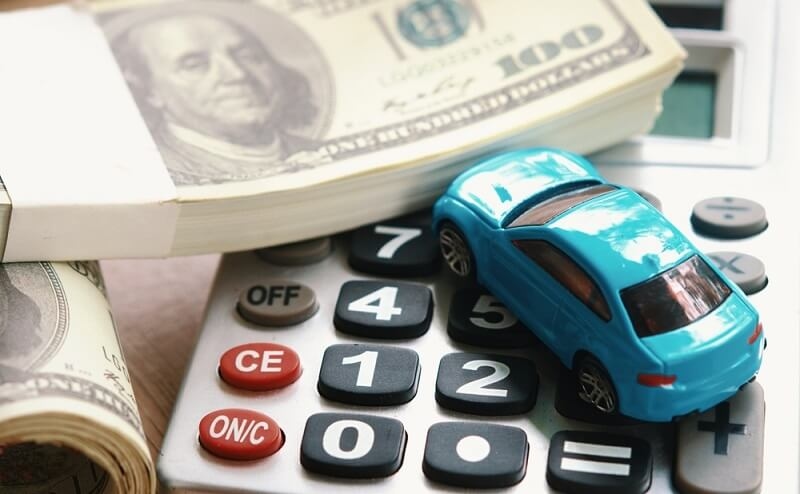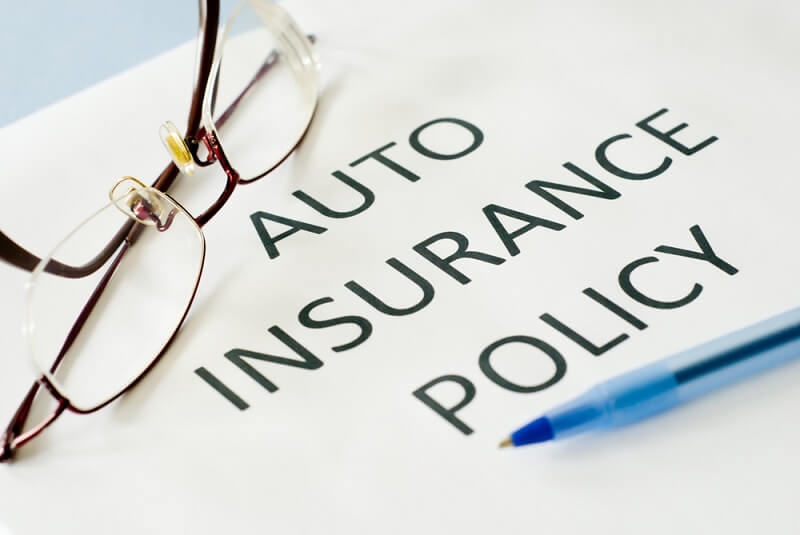Your Guide to Auto Insurance That Truly Guards Your Wallet

Auto insurance is a legal requirement when driving and a financial safety net against accidents, damages, and the unforeseen. However, for too many drivers, their auto insurance policy might be in another language. Liability, collision, comprehensive, and deductible often baffle new drivers, causing further confusion about what they're paying for and whether it's enough.
This guide takes auto insurance and breaks it down to simple English so you can understand its purpose, your options for coverage, and how to select coverage that financially protects you. By the time you finish the material in this guide, you'll feel empowered to make informed decisions about insurance without overspending and purchasing coverage that doesn't fit your needs.
Why Auto Insurance Matters
Driving is a responsibility; we might be in a car accident more often than we want to admit. It could be anything from a minor fender-bender in traffic to a more serious accident that causes injuries. The financial fallout from an accident can be catastrophic for you. The different types of auto insurance coverage were designed to cover you against the costs of accidents (for example, medical bills and repairs). If you don't have auto insurance, you could be liable for expenses such as medical bills, car repairs, and even a lawsuit.
Auto insurance coverage is not just for accidents. You could also damage your vehicle due to theft, a natural disaster, vandalism, or unforeseen damage. Understanding how auto insurance works will ensure that you won't just buy insurance to meet state law minimum requirements; you'll be efficiently purchasing peace of mind knowing that your financials are protected.
How Does Auto Insurance Work?
Essentially, auto insurance is merely a contract. You pay a certain premium, and the insurance company agrees to reimburse certain costs should something happen to your vehicle or should you cause any damage to others.
Here's how the flow works:
- You buy coverage. You select the policy you want, the type of coverage, and the limits you want.
- You pay premiums. Your insurance payment will always be a recurring (monthly, quarterly, or yearly) payment.
- Something happens. You get into an accident, get your car stolen, or damage it somehow.
- You file a claim. Often, a phone call is required where you provide information to the insurance company.
- You pay your deductible. Before your insurance kicks in, you are responsible for your deductible amount for a portion of the cost.
- Insurance pays for the rest. Up to your policy limit, the insurance company pays for repairs, medical bills, or liability expenses.
Once you understand this flow, it is obvious that deductible vs. copay in health insurance is the same thing—you pay something out of pocket before your insurance starts paying for your expenses.
The Key Auto Insurance Coverage Types

When buying insurance, you'll encounter several types of coverage, each protecting you in different circumstances. Let's break them down one by one.
1. Liability Insurance—Your Legal Safety Net
- What it covers: Damage or injury you cause to others.
- Why it's important: Most states require you to carry liability coverage. If you rear-end another driver or cause injuries, liability insurance covers their medical bills and vehicle repairs.
Tip: Always opt for limits that exceed the legal minimum. Medical expenses and lawsuits can be much more expensive than you'd like to imagine.
2. Collision Coverage—Repairs After an Accident
- What it covers: Repairs to your vehicle after an accident, regardless of fault.
- When to purchase it: This makes sense if your vehicle is new and expensive or if you have financed it. If your car is older or not worth much, you may not want to carry it.
3. Comprehensive Coverage—Protection Beyond an Accident
- What it covers: Non-collision damage such as theft, fire, vandalism, falling trees, or weather-related events.
- Why it is worth it: It protects against unexpected events you don't have control over.
4. Personal Injury Protection (PIP) or Medical Payments
- What it covers: Medical costs for you and your passengers after an accident, regardless of fault.
- Good to know: In some states, PIP is required. Even if not, it’s witty coverage for extra medical security.
5. Uninsured/Underinsured Motorist Coverage
- What it covers: Accidents with drivers who don’t have insurance—or don’t have enough.
- Why it matters: Sadly, not everyone follows the law. This ensures you’re protected even if the other driver can’t pay.
6. Optional Add-Ons
- Roadside assistance for breakdowns.
- Rental car reimbursement while your car is in the shop.
- Gap insurance if your financed car is totaled and worth less than your loan balance.
These add-ons can make your policy more useful and raise premiums, so weigh them against your needs.
What Does Liability Insurance Cover in Detail?
Since liability coverage is essentially the backbone of all auto insurance, let's go even further. Liability coverage is generally divided into two sections:
- Bodily Injury Liability—covers the medical bills, rehabilitation, and sometimes lost income for the other party.
- Property Damage Liability—covers the damage caused by your driving to someone else's car, home, or property.
When you see numbers like 100/300/50, it means:
- $100,000 for injuries for one person
- $300,000 for injuries total for the accident
- $50,000 total for property damage for the accident
The higher the limits you choose (and therefore the higher the cost), the more you're protecting yourself from huge out-of-pocket expenses.
Factors Affecting Insurance Cost
Ever wonder why two people with the same car and coverage can pay very different premiums? That’s because insurers look at a variety of factors:
- Driving history—Accidents and tickets raise costs.
- Age and experience—young drivers usually pay more.
- Type of vehicle – Luxury and sports cars cost more to insure.
- Location – Areas with high accident or theft rates have higher premiums.
- Coverage limits and deductibles—Higher coverage means higher cost, but higher deductibles lower premiums.
- Credit score (in some regions)—A higher score can mean lower premiums.
Knowing these helps you understand how auto insurance works behind the scenes and why your premium looks the way it does.
Best Car Insurance for Beginners
If you're new to driving or purchasing your first policy, it's understandable that you're feeling a bit overwhelmed. Here are some tips to get you started:
- Don't automatically go for the cheapest policy. While minimum coverage may meet your legal obligations, it could leave you vulnerable to financial hardship in the event of a serious accident.
- Use a mix of coverage and cost. Depending on the value of your automobile, your income, and what you can afford, consider how much risk you're taking.
- Ask about discounts. Many insurance companies offer discounts for good grades (students), safe driving, or policy bundling with home insurance.
- Review your situation annually. Your situation can change as your auto ages and as your financial circumstances improve.
Deductibles and How They Work
Your deductible is the expense you have to pay before insurance kicks in. Take, for example, if you have a $500 deductible and repairs are $2,500, you pay $500 and insurance pays $2,000.
- Higher deductible = lower premium (but more out of your pocket if you file a claim).
- Lower deductible = higher premium (but less out of your pocket if something happens to you).
As a newbie, you are better off choosing a deductible at a price point you can actually afford and not too high just to save money on a monthly basis.
Tips to Lower Auto Insurance Premiums
While you can’t control all cost factors, there are strategies to keep your premiums manageable:
- Maintain a clean driving record. Safe driving pays off.
- Bundle policies. Combine auto and home or renter’s insurance for discounts.
- Increase your deductible. Your premium will go down if you can afford a higher out-of-pocket amount.
- Use telematics or safe-driving apps. Many insurers reward careful driving tracked through technology.
- Shop around regularly. Don’t stick with one provider forever—compare quotes at renewal.
Common Mistakes to Avoid
Many drivers end up with policies that don’t serve them well. Watch out for these pitfalls:
- Only buying minimum coverage. This saves money upfront, but could cost you thousands later.
- Ignoring uninsured motorist coverage. This leaves you vulnerable to others’ irresponsibility.
- Over-insuring old cars. Paying for collision on a car worth less than your deductible isn’t cost-effective.
- Not understanding exclusions. Some policies don’t cover certain damages—always read the fine print.
Final Thoughts
Auto insurance doesn't have to be complicated. Once you understand auto insurance coverage types, deductibles, and liability, you will see how to structure a policy that minimizes out-of-pocket expenditures while protecting you well.
Balance is the key: enough coverage to ensure the safety of your finances if you had a significant loss, but not so much coverage that you're overpaying for areas you do not need insured. Whether you're a new driver looking for the best car insurance for beginners or simply looking for better coverage today, spending some time understanding the basics will be a substantial benefit. It will allow you to operate with confidence on the road.
Insurance can often feel like another payment you have to make, similar to other bills people dread. However, it is not quite like that at all. Your insurance is a safety net, and it gives you confidence and comfort in knowing that you can drive an automobile with the peace of mind of knowing that you are protected from disruptions in the road of life.
This content was created by AI

